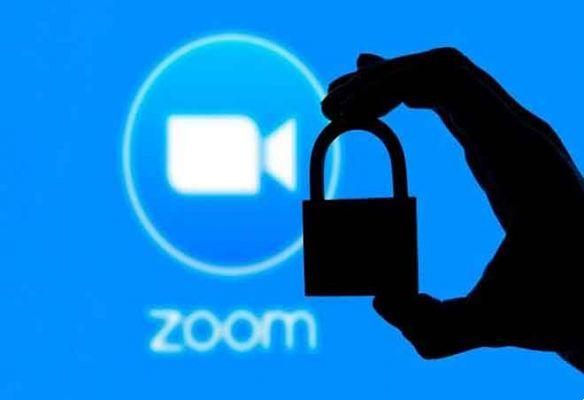
Zoom faced a lot of criticism about security issues earlier this year. A year has passed and in the meantime, they have drastically improved in privacy and security. One security feature that many privacy-conscious users have been requesting for a long time is end-to-end encryption for meetings. As promised by Zoom, the feature is now available. Wondering how to enable end-to-end encryption on Zoom? Find your answer here.
Even though Zoom provided encryption for calls previously, the hype was about the decryption of content taking place on the Zoom servers using those generated keys. Now with end-to-end (E2EE) encryption, encryption keys are generated from participating machines and distributed using public encryption mechanisms. So the Zoom servers have no details on these keys. In this way, this new encryption feature offers greater security.
Let's see how to enable and disable end-to-end encryption on Zoom. The post also talks about what happens by enabling end-to-end encryption and whether you need to enable it.
Supported platforms and accounts for end-to-end encryption
End-to-end encryption functionality is available to all Zoom users regardless of whether they have a free or paid account. However, users of free / basic accounts will need to verify their mobile number when they enable end-to-end encryption.
As of now, end-to-end Zoom encryption is available on Zoom desktop clients (Windows and Mac), mobile apps (Android and iOS), and Zoom Rooms.
Final report: kindly update your Zoom apps before using this feature. To update mobile apps, open the App Store (iOS) or Google Play Store (Android) and search for Zoom. Tap Update. On the desktop client, click the profile picture icon and select Check for an update from the menu.
The Zoom Web Client and third party services using the Zoom SDK do not support E2EE by default. Likewise, if a meeting is end-to-end encrypted, users from the phone, SIP / H.323 devices, on-premises configurations, or Lync / Skype clients will not be able to join.
Steps to enable end-to-end encryption on Zoom
To enable E2EE, you need to change an account setting that can only be accessed from the web version of Zoom. You can change it at the user, group or account level.
How to enable end-to-end user-level encryption
Here are the steps in detail:
- Go to the zoom login page. Log in with your Zoom account details. You will be taken to the Zoom account page.
- Click Settings from the left panel.
- On the Meeting tab, click Security.
- Scroll down and turn on the switch next to Allow use of end-to-end encryption.
- You will be asked to verify your number. So yes, you have to do the necessary.
- After verification, you will need to choose the default encryption type on the same page. Check the box next to End-to-end encryption. Click the Save button.
Suggestion: find out how to change the name in Zoom on mobile and PC.
How to enable end-to-end encryption for groups
- Open the zoom login page. Log in using your administrator account details.
- From the left panel, click User Management> Group Management.
- Click the group for which you want to enable end-to-end encryption. Click on Settings.
- On the Meeting tab, click Security. Enable the switch next to Allow use of end-to-end encryption. Choose end-to-end encryption. Click Save.
How to enable end-to-end encryption at the account level
- Log in using the admin details on the zoom login page.
- Click Account Management from the left panel. Then click Account Settings.
- Click the Meeting tab. Under Security, look for Allow use of end-to-end encryption setting. Enable the switch next to it. Select End-to-End Encryption from the list of options. Click Save.
Final report: Zoom may change the steps in the future. Then check out the steps on Zoom's support page for end-to-end encryption.
How to disable end-to-end encryption on Zoom
To disable end-to-end encryption, select Strong encryption instead of End-to-end encryption in the previous steps. In case you want to turn off encryption completely, disable the switch next to Allow use of end-to-end encryption.
How to verify that Zoom meeting is end-to-end encrypted
When a Zoom meeting is end-to-end encrypted, all attendees will see a green shield icon with a lock in the center in the upper left corner of the desktop client. Regular meetings also have a green shield icon but with a check mark inside it.
Attendees can also verify the meeting security code with the organizer. The best practice can be for the host to read the code aloud so that everyone can verify it. To view the code, click the green lock icon in the upper left corner of the Zoom desktop app. Then click Verify.
Suggestion: A Complete Guide to Solving Audio Problems in Zoom
On the Zoom mobile apps, you will see E2EE text at the top of a meeting. Tap it to show the meeting code.
What impact does end-to-end encryption have on Zoom meetings
Zoom is implementing four-step end-to-end encryption. Unfortunately, enabling end-to-end encryption in the current phase, which is phase 1, will disable some features in Zoom. Those are:
- Ability to join a meeting before the host
- Cloud recording
- streaming
- Live transcription
- Group rooms
- Polls
- 1: 1 private chat
- Reactions to meetings
Hopefully, these capabilities will be restored in the future stages of end-to-end encryption.
How many users can join end-to-end Zoom encrypted meetings
Up to 200 attendees can join an end-to-end Zoom encrypted meeting. This will not impact users on Basic or Pro plans, which still only allow 100 attendees. But it could be a problem for Business or Enterprise subscribers who allow 300 to 500 attendees.
When to enable end-to-end encryption on Zoom
As you saw above, enabling E2EE disables some important features. If you agree, you can enable end-to-end encryption in all your meetings where you want more security. But if these features are important, you should avoid enabling end-to-end encryption until it is fully implemented.
Further Reading:
- How to turn off the camera during a call with Zoom
- How to find the Zoom meeting password on mobile devices and PCs
- How to raise your hand on Zoom
- How to broadcast a Zoom meeting on TV
- How to show profile picture instead of video in Zoom Meeting






